

Santiago
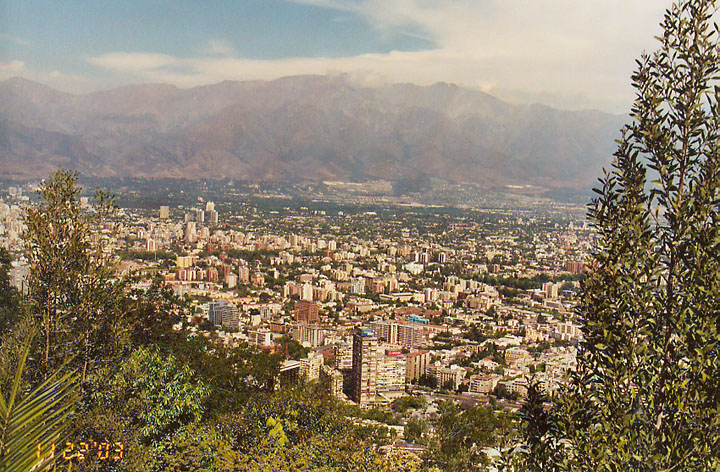
Santiago as seen from the heights of San Cristabol
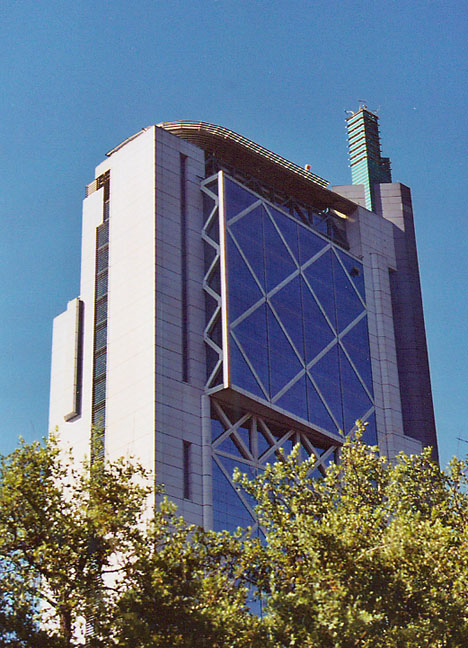
tall building
Santiago (Chile), capital city of Chile, on the Mapocho River, in the central part of the country. Santiago is situated at an elevation of 520 m (1,700 ft) on an alluvial plain, with the snowcapped Andes Mountains visible to the east. It is Chile's largest city and its principal commercial, manufacturing, transportation, and cultural center. Major manufactures of the metropolitan area include processed food, textiles, metal and wood products, clothing, and chemicals. Government activities and tourism are also important to the economic base. The city is served by an international airport.
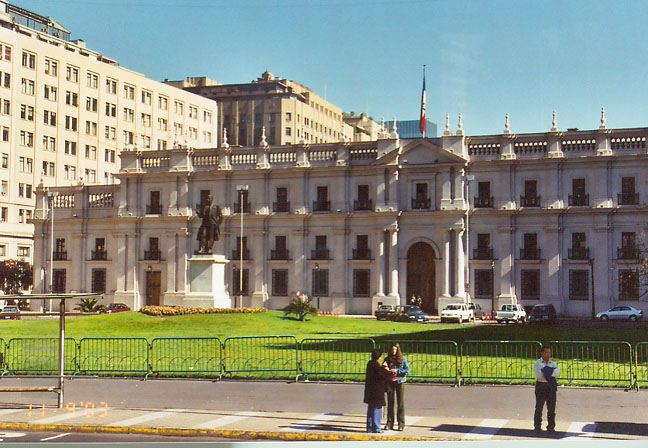
Moneda Palace
More Photos of the Moneda Palace
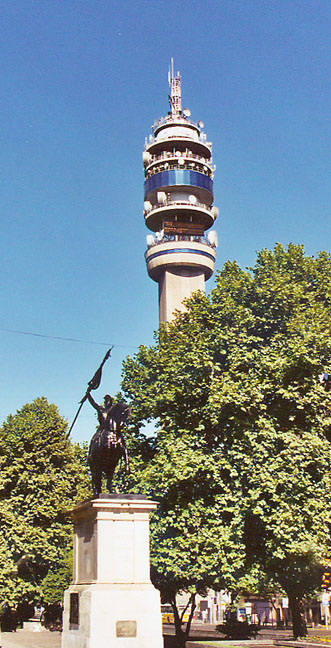
the tower
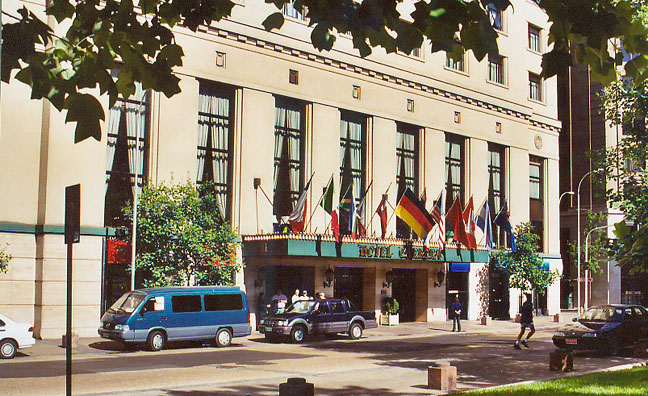
the Carrera Hotel
(soon to be taken over by the government)
Santiago is the site of the University of Chile, founded in 1738 as the Royal University of San Felipe; the Catholic University of Chile (1888); the University of Santiago de Chile (1947); and the General Bernardo O'Higgins Military School (1817). Also in Santiago are the National Archives, the Congress Building, the National Library, and the National Stadium.
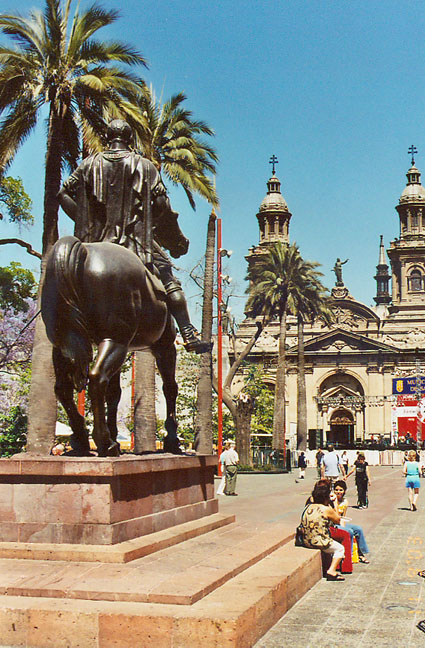
Plaza des Armas
Among the many museums in the city are the National Historical Museum, with collections from the pre-Columbian, colonial, and independence periods; the National Museum of Fine Arts; the Contemporary Art Museum, in Forestal Park; the Art of the American Peoples Museum, with a collection of Chilean folk art; the National Museum of Natural History; the Natural History Museum of San Pedro Nolasco; and the Salvador Allende Museum of Solidarity, which features contemporary art by artists from around the world. Other points of interest are a zoological park, the 16th-century cathedral, and the Presidential Palace, built in the early 19th century.
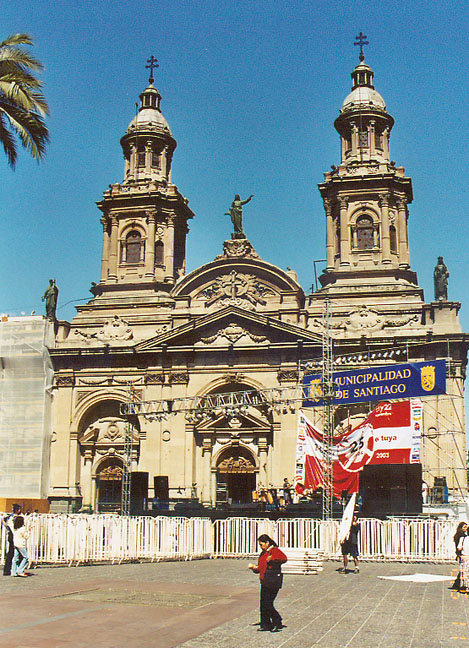
the cathedral

interior
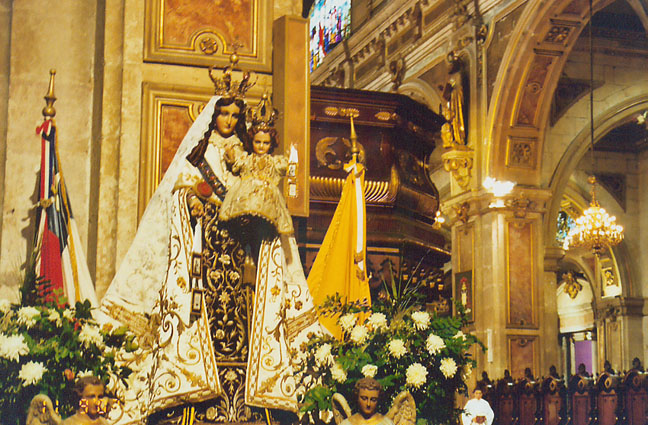
Mary altar
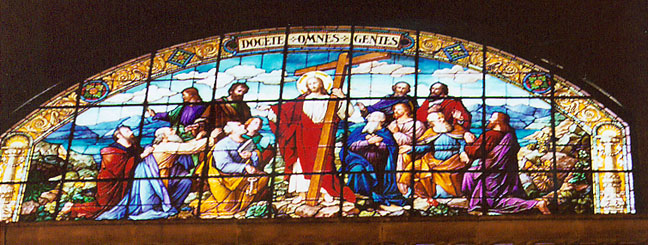
stain glass window
Santiago was established in 1541 by Spanish conquistador Pedro de Valdivia in an
area inhabited by the Picunche people. In 1647 the community was severely
damaged by an earthquake. In 1651 Santiago was made an Episcopal see, and when
Chile achieved independence in 1818, it became the nation's capital. The
community has periodically been damaged by severe floods, and it repeatedly
suffered from civil strife in the early 1970s. Population 4,703,954 (1998).
Text from Microsoft Encarta

San Francisco church
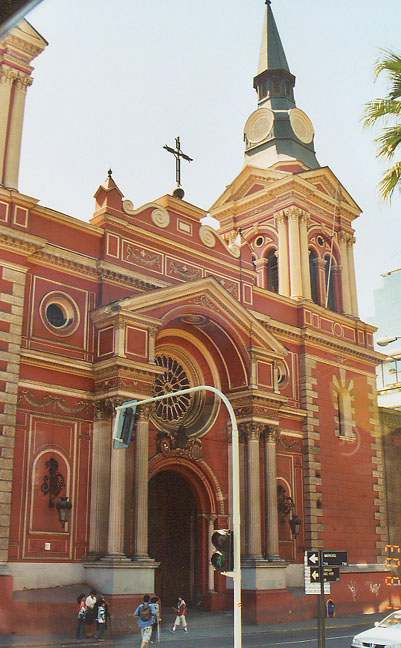
St. Augustine church

Post Office
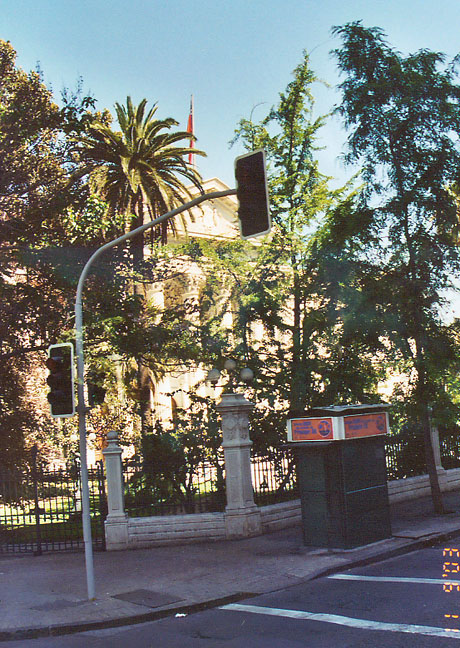
former Legislative Assembly
(was moved to Valparaiso by Pinochet)

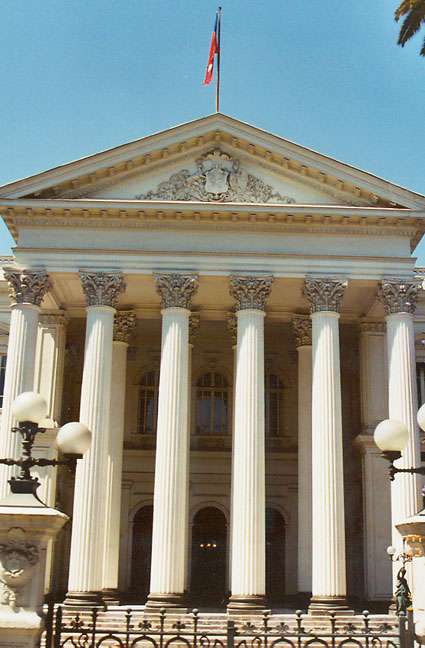

Art Museum

Museum
current exhibit on the Chile wine culture
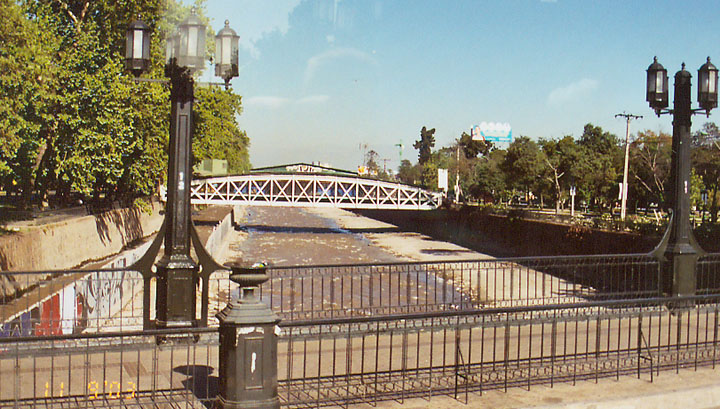
the Mapocho river which divides the city
 0
0
many drink beer
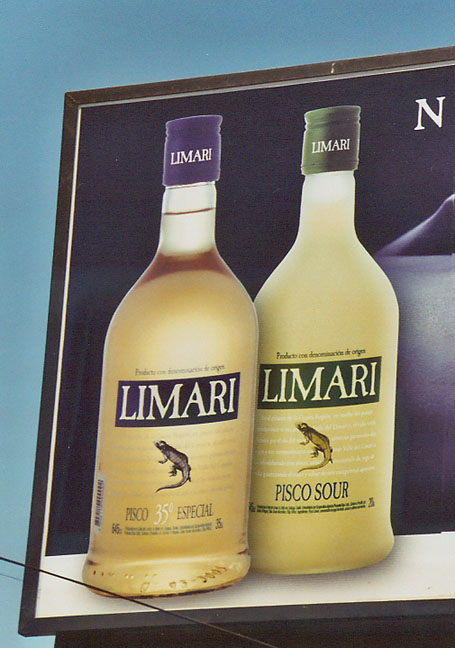
but the tourists like Pisco
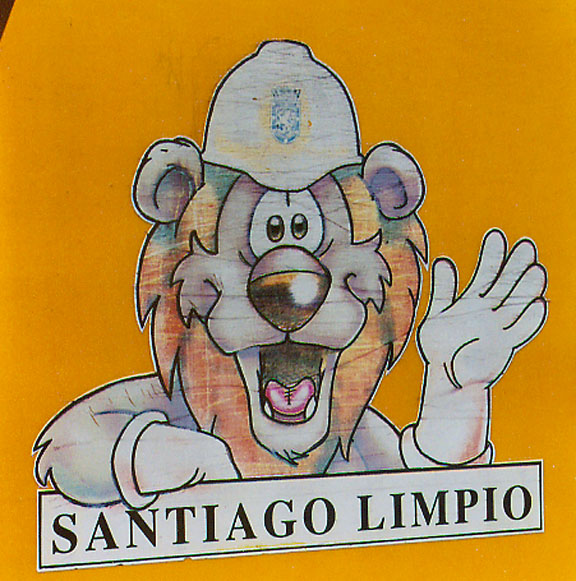
I keep the city clean
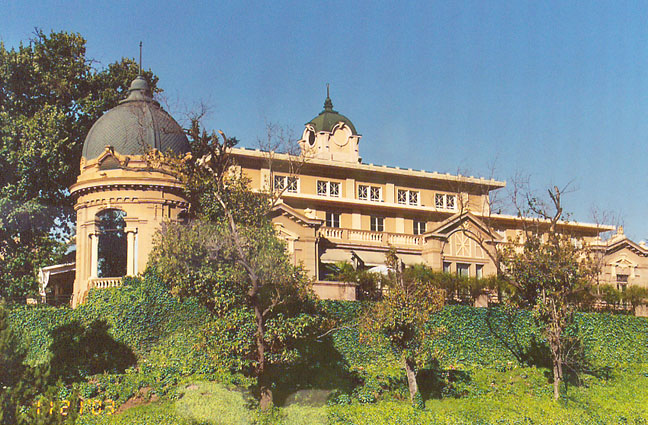
along the road to the airport

church at the Dominican estate
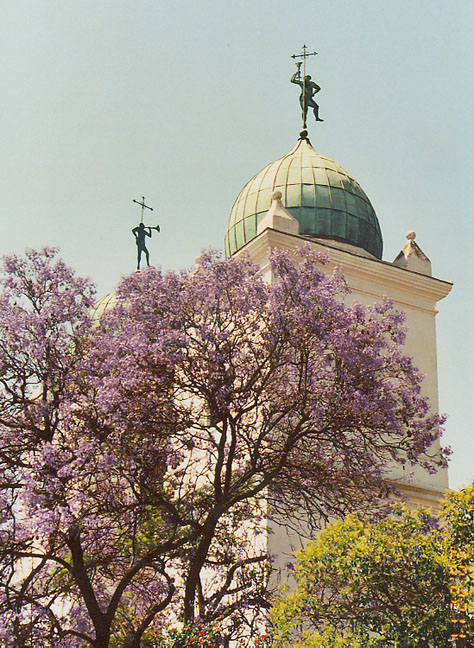
angel weathervanes
![]()
![]()